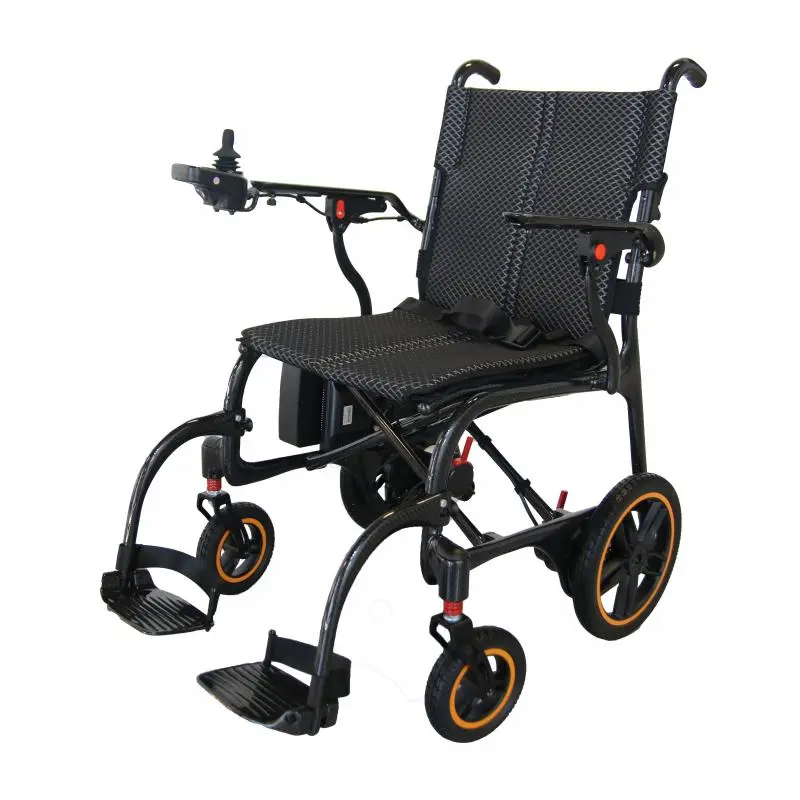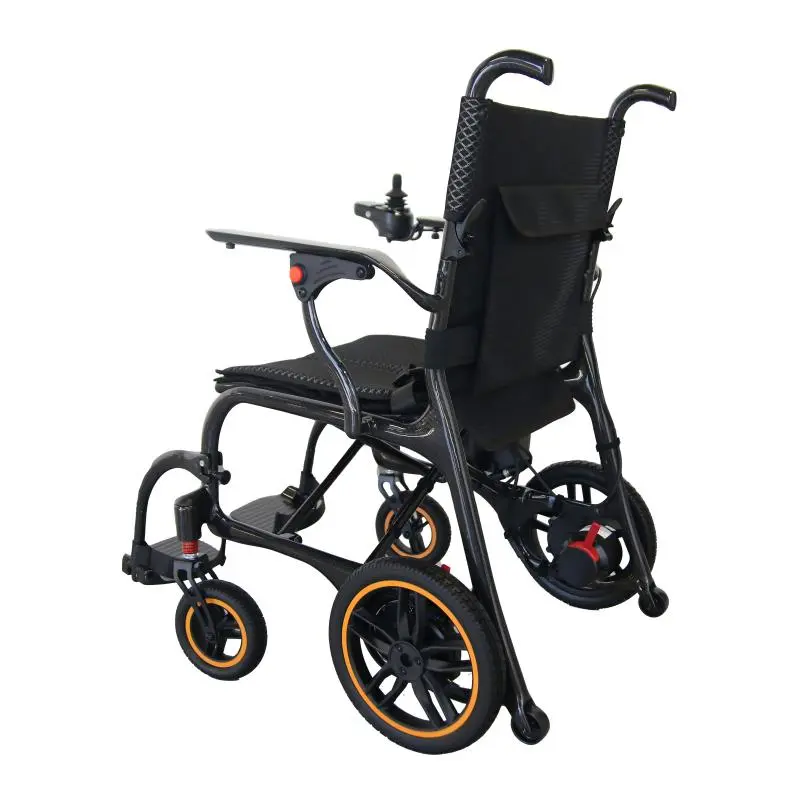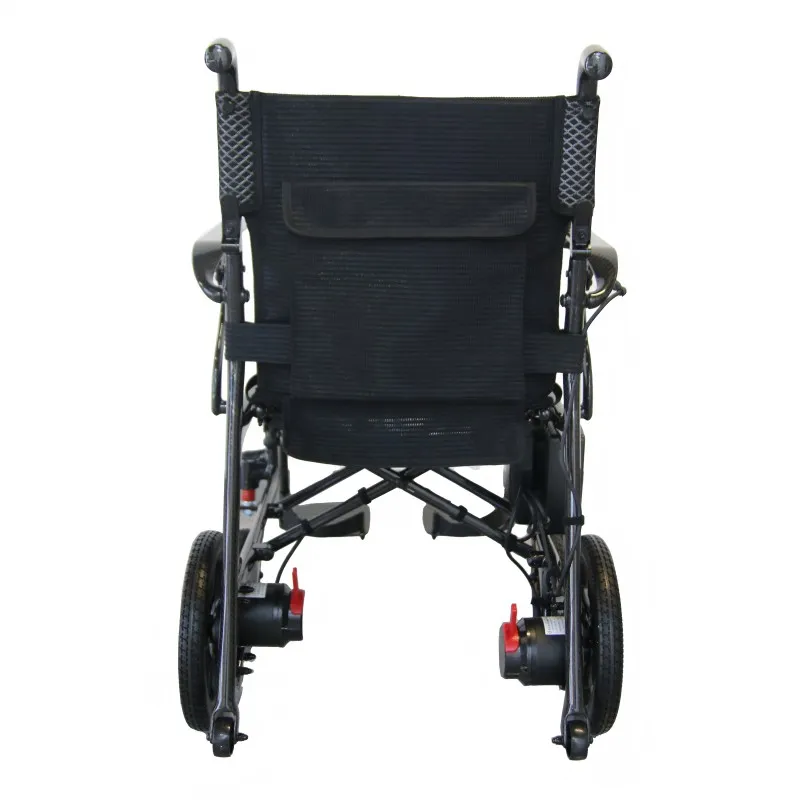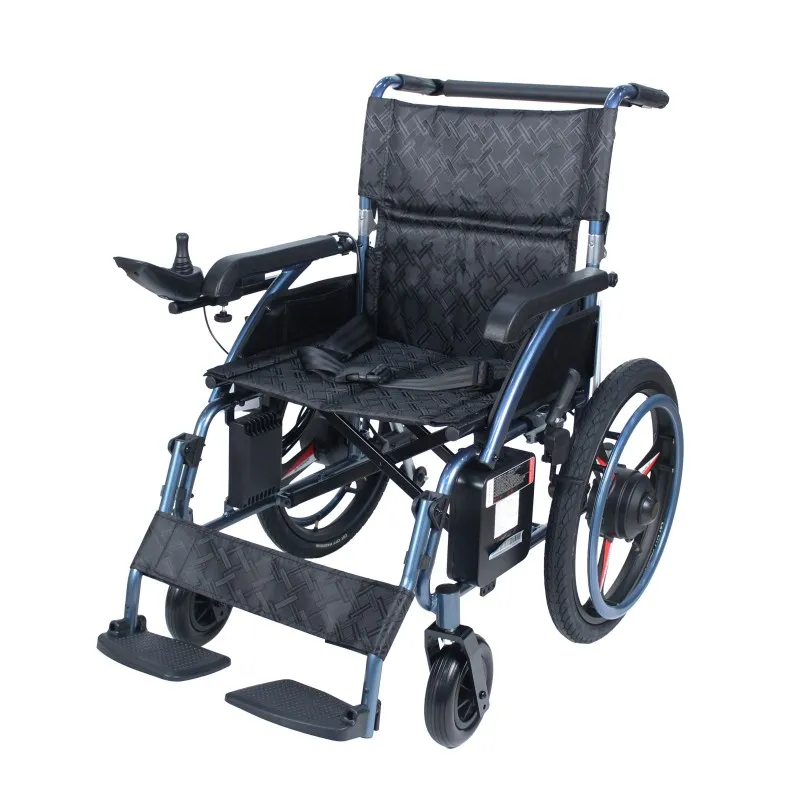The market debate is intensifying over whether carbon fiber electric wheelchairs are stronger and more suitable for everyday use than traditional aluminum electric wheelchairs. Carbon fiber is known for its lightness and strength, while aluminum alloys have long dominated the wheelchair market thanks to their lightness, low cost, and corrosion resistance.
This article deeply analyzes the question of whether a carbon fiber or aluminum electric wheelchair is stronger, examining five dimensions: materials science, engineering design, actual product data, safety and maintenance, and usage scenarios and cost. It also offers professional conclusions and purchasing recommendations to facilitate decision-making.

Electric Wheelchairs: Why Comparisons of "Strongness"?
"Strongness" is a core concern for users when choosing an electric wheelchair—it affects load capacity, safety, lifespan, and maintenance frequency. Carbon fiber electric wheelchairs have recently attracted attention for their extremely low weight and high payload capabilities (for example, some manufacturers claim a wheelchair weighing only a dozen kilograms and capable of carrying over 100 kilograms). Traditional aluminum electric wheelchairs are widely used due to their lower manufacturing costs and mature processing technology.
Comparing whether two materials are "equally strong" requires breaking down "strong" into specific engineering metrics: tensile strength, specific strength (strength/density), stiffness (modulus), fatigue life, impact toughness, and failure modes. These metrics are then evaluated in conjunction with actual structural design and manufacturing processes.
Below, we address this question from both the material and engineering perspectives, supporting our arguments with market examples.
Carbon Fiber vs. Aluminum Alloy: A Physical and Mechanical Comparison
In materials science, commonly used comparison metrics include density, tensile strength, stiffness (elastic modulus), and specific strength/specific stiffness (strength or stiffness divided by density). These metrics directly determine how much force and deformation a material can withstand at the same weight.
1. Carbon Fiber Composites
Composite materials composed of a carbon fiber core and a resin matrix possess extremely high specific strength and stiffness—at the same weight, carbon fiber composites are typically much stronger and stiffer than most metals, including aluminum alloys. This explains their widespread use in aviation, racing, and high-end sports equipment. Research and industry data indicate that the specific strength of carbon fiber can be several to nearly ten times higher than that of aluminum (depending on the fiber type and the composite process).
2. Aluminum Alloy
Aluminum alloy has a lower density than steel, is easier to extrude and weld, and offers excellent toughness and corrosion resistance (protected by a natural oxide film). While its absolute strength is inferior to that of high-performance carbon fiber composites, aluminum alloys offer excellent processability, low cost, and ease of repair, making them a long-standing mainstream choice in wheelchair manufacturing. Aluminum alloys generally exhibit more predictable fatigue crack growth and plastic deformation than brittle composites, resulting in superior performance under certain impact or localized overload conditions.
Simple Conclusion (Material Level): From a "specific strength/specific stiffness" perspective, carbon fiber outperforms aluminum alloys; however, aluminum alloys have clear advantages in terms of plasticity, repairability, and cost controllability.

Actual Products and Data: (Taking Dayang as an Example)
The most direct comparison between theory and product performance comes from manufacturer-published specifications. The carbon fiber electric wheelchair from Chinese manufacturer Dayang Medical is a prime example. With a net weight of approximately 13.5 kg and a load capacity of 136 kg, it boasts "approximately 30% greater strength than aluminum." These figures reflect the strength-to-weight ratio of carbon fiber and the manufacturer's ability to reduce weight through an integrated molding process.
However, caution is advised when interpreting manufacturer data: load capacity typically refers to static load capacity under normal use (or may include a limited safety factor) and does not equate to lifespan performance under extreme impacts, drops, or prolonged fatigue cycles. Therefore, when directly comparing the "weight-to-weight ratio" of Dayang or other carbon fiber electric wheelchairs with aluminum wheelchairs, it is necessary to examine the performance and test results of each model separately in terms of impact, drops, fatigue cycles, and ease of repair.
Carbon Fiber vs. Aluminum Electric Wheelchairs: Which is More "Sturdy" for Long-Term Use?
"Strong" refers not only to one-time strength but also to long-term life (fatigue) and impact toughness:
1. Fatigue Durability
Carbon fiber composites generally outperform many metals in fatigue cycles. Unlike metals, composites do not show visible plastic deformation to indicate failure. When properly designed and manufactured, carbon fiber exhibits excellent fatigue resistance to repeated loads. However, once microcracks or matrix debonding occur, crack propagation in composites can be difficult to detect and complex to repair. Aluminum alloys, on the other hand, exhibit plastic deformation (bending) and gradually growing cracks. Crack detection is relatively mature and intuitive, making local repair or component replacement easier.
2. Impact and Fracture Toughness
Under high-energy impacts (such as a wheelchair fall or impact with an edge), aluminum alloys typically undergo plastic energy absorption (bending and denting), which helps absorb energy to a certain extent and protect internal components. Carbon fiber composites, on the other hand, may experience brittle fracture (fiber breakage or matrix cracking). While the surface may appear intact, the internal delamination may be severe.
In summary, when it comes to long-term durability, both have their advantages and disadvantages. Carbon fiber offers advantages in lightweighting and cyclic loading, while aluminum is easier to manage in terms of impact absorption, field repairability, and structural visibility. Buyers should determine which durability is more important based on their individual usage environment (frequent travel, bumpy transportation, or static indoor use).

Manufacturing, Repair, and Cost: Essential Issues
1. Manufacturing Cost
The raw material and molding costs of carbon fiber are significantly higher than those of aluminum alloys, resulting in a generally higher price for carbon fiber electric wheelchairs. Aluminum processing (extrusion and welding) is highly mature globally, with a robust manufacturing chain and repair resources, making aluminum electric wheelchairs more competitive in cost-sensitive markets.
2. Repair and Sustainability
Aluminum frames are relatively easy to repair on-site (bending, repair welding, or replacing profiles). However, structural cracks or delamination in carbon fiber require specialized bonding or component replacement, which is costly and requires specialized equipment. On the other hand, carbon fiber is corrosion-resistant (it doesn't rust like metal), making it a significant advantage in long-term maintenance in corrosive environments.
3. Recycling and Environmental Impact
Aluminum is a mature recycling material with low recycling costs. Recycling carbon fiber composites remains an industrial challenge, with high recycling rates and complex processes, which are shortcomings of carbon fiber in sustainability assessments.
Thus, from the perspective of "sustainable use cost," aluminum electric wheelchairs offer greater ease of maintenance and material recycling, while carbon fiber offers advantages in terms of lifetime performance and weight.
Who is a carbon fiber electric wheelchair suitable for?
Who is an aluminum electric wheelchair suitable for?
Based on the above material and engineering differences, practical user recommendations are provided:
• For frequent travelers, air travelers, and those seeking ultra-lightweight and portable options: A carbon fiber electric wheelchair is preferred due to its extremely high specific strength and low weight (e.g., Dayang's 13.5kg product), making it easier to transport and check in.
• For those with limited budgets who require durability and easy maintenance in long-term, resident environments (such as nursing homes/community settings): Aluminum electric wheelchairs are more suitable for institutional procurement and large-scale deployment due to their cost and ease of maintenance.
• High-intensity daily use or extreme environments (frequent collisions, rough surfaces): Aluminum frames are more robust against accidental damage due to their plastic deformation properties and on-site repairability.
• Users with high demands for appearance, brand, and technological advancement (such as athletes or high-end personalized users): Carbon fiber offers greater customization, higher rigidity, and lighter propulsion resistance, and is often chosen in the high-end market (such as racing wheelchairs and wheelchairs for airline travel).

Do you manufacture for any well-known brands?
Yes, we serve as an OEM factory for several international brands in the medical equipment field. While we maintain client confidentiality, our reputation as a Chinese medical equipment supplier is supported by years of cooperation with hospitals, retailers, and healthcare networks across the globe. We offer private label production, custom branding, and exclusive distribution quotes for regional partners.










